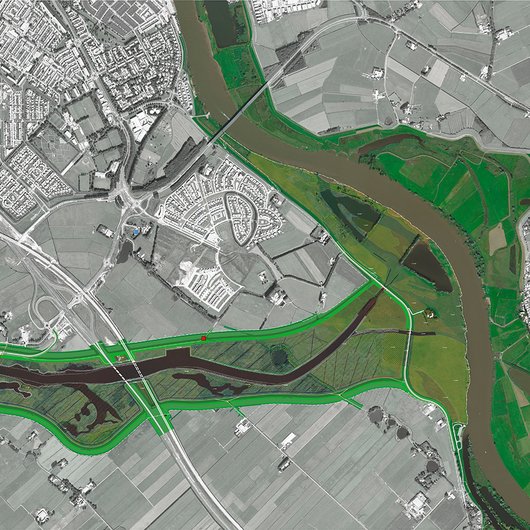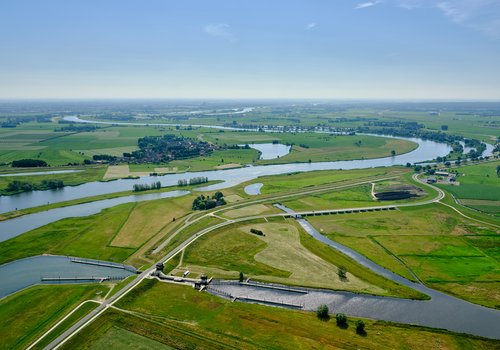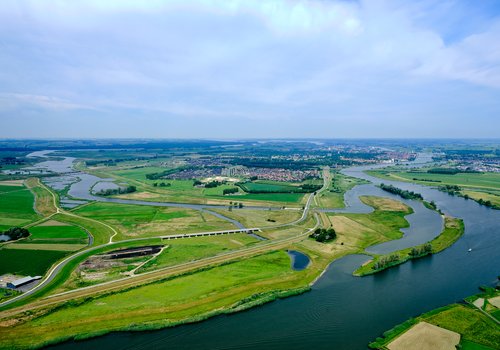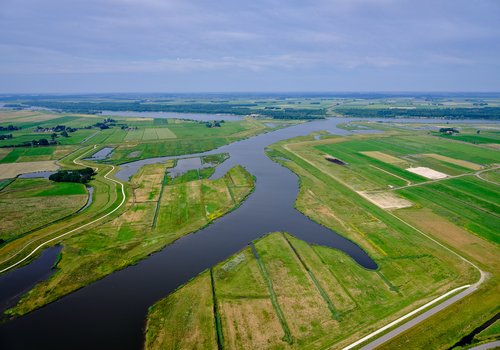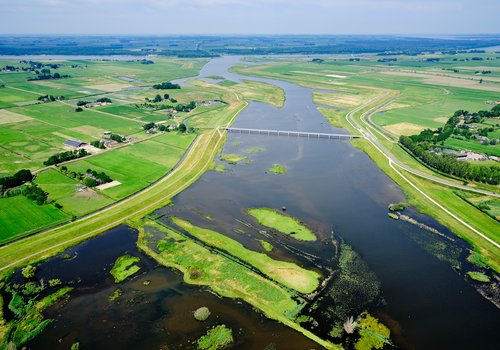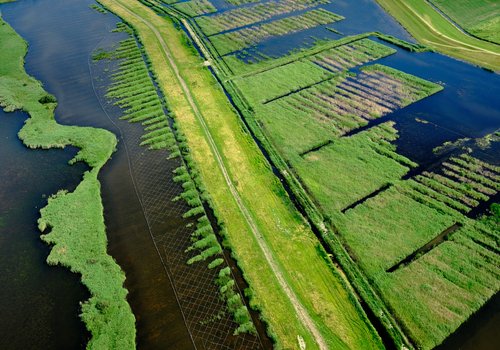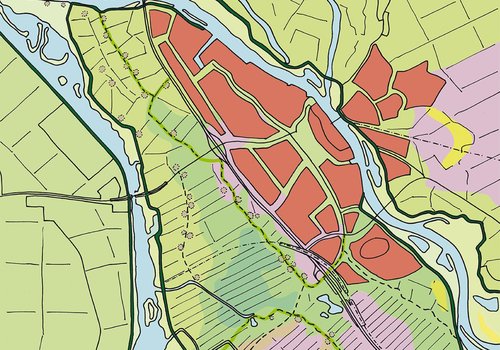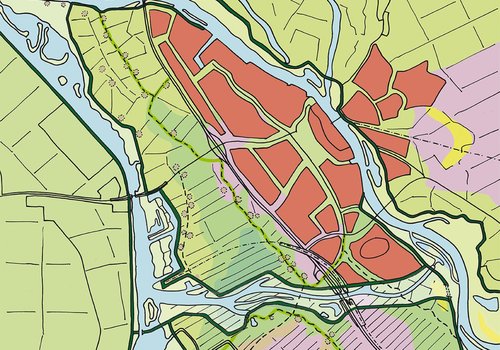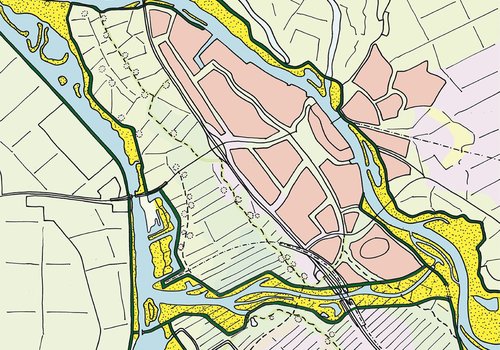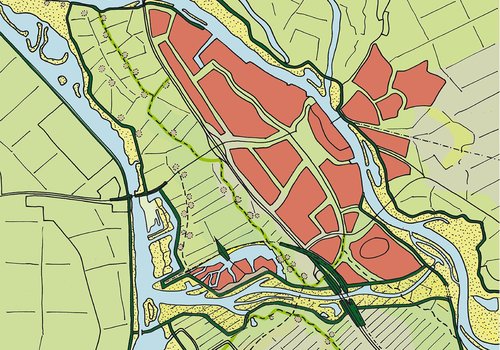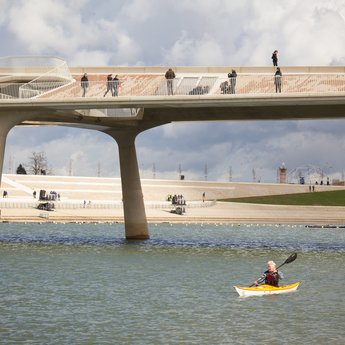Motive
Background room for the river
Large projects are being executed in 34 locations in the Dutch river area. The rivers have to cope with more and more water, which increases the risk of flooding. In order to prevent this, dikes are relocated, flood plains are dug, high water channels and even bypasses are constructed, which is a considerable challenge. Besides safety, the Room for the River programme has another objective: spatial quality. Therefore, landscape architects are involved from the concept phase through to the construction phase.
